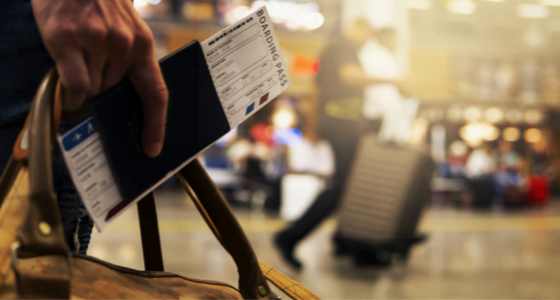The Airport Restaurant & Retail Association (ARRA) today came out with recommendations on how the industry can evolve to ensure airport concessionaires have a path back to prosperity. The COVID-19 pandemic has revealed “fundamental flaws in the business structure” between airports and concessionaires. ARRA said the flaws identified suggest that “changes in the leasing landscape are long overdue,” and put forth recommendations for change in four key areas.
The recommendations came in a white paper titled: Facing Facts III: Survival, Revival and Braving the Future. It’s the third in a series of papers discussing the COVID-19 pandemic and its impact on the airport restaurant and retail industry.
ARRA acknowledged that the economic impact of the pandemic on key aviation stakeholders – airlines, airports and concessionaires – has been severe, and noted that while passenger traffic is showing positive signs, a full rebound is yet to be realized. For the concessions industry specifically, the trade group said the current situation brings significant challenges.
“Airport restaurant and retail operators – primes, mid-sized companies, and ACDBEs alike – face a long road to recovery having experienced staggering business losses and incurring massive debt,” the white paper said. “Global losses for the largest publicly traded companies exceeded $4.5 billion in 2020 with reported newly accumulated debt in the billions, and privately owned companies lost billions more. Meanwhile, restaurant and retail operators must continue to adjust to constantly changing flight schedules and capacity, slowly increasing but uneven passenger levels, and a set of shifting airport dynamics that make planning and predicting operational needs nearly impossible – all the while challenged by a workforce reluctant to re-engage.”
“Even if traffic were immediately restored to pre-pandemic levels, concessionaires would not be recovered,” the report continued. “With debt as the standard bearer of the day, it will take several years to return to a positive cash position. Our new debt reality must, therefore, be acknowledged in order for the industry to move forward constructively.” The paper also said the process of returning to positive cash flow is stymied by pre-pandemic debt, deferred rents and new debt that has piled up for many companies during the pandemic.
New operational challenges have also come to the fore. The paper said those range from extreme labor challenges, supply chain disruptions and higher costs, and a changing mix of passengers with different spending patterns.
Key Challenges
The paper addressed four key areas of the business model: minimum annual guarantees, capital investments, labor access and costs, and operational flexibility.
The minimum annual guarantee, or MAG, is commonly used in airport-concessionaire contracts. However, the pandemic exposed the flaws in the model, ARRA argued. “Their lack of flexibility under the current MAG model subjects concession businesses to extraordinary, disproportionate risk, despite no control over a key factor of their revenue stream – the number of potential customers,” the paper noted. “In particular, MAGs have historically contemplated only a small fluctuation in passenger volume over the course of a year. Dramatic, immediate, and/or prolonged loss of passengers was never contemplated nor foreseen; thus, no plan exists to address such a crisis.” ARRA acknowledged that airports have little control over passenger volume as well, but said airports operate with airline funding guarantees and typically enjoy a “too big to fail” status.
ARRA proposed both short and long term solutions that included continued MAG waivers until enplanements reach 85 percent of 2019 levels and, for the long-term, variable MAGS that adjust based on enplanement levels.
Second, escalating construction costs have made a fair return on investment elusive for concessionaires, ARRA said, and called on airports to restructure capital investment models. For the short term, ARRA listed contract term extensions and reduction or elimination of mid-term capital obligations among recommendations for survival. Over the longer term, the trade group is proposing new contract terms ranging from 10-15 years, tenant improvement allowances, and expansion of base building obligations and commitments from airports, among other recommendations.
Labor has emerged as one of the biggest short-term challenges facing concessionaires and airports this summer as a lack of flexibility under the current MAG model subjects concession businesses to extraordinary, disproportionate risk, despite no control over a key factor of their revenue stream – the number of potential customers. In particular, MAGs have historically contemplated only a small fluctuation in passenger volume over the course of a year. Dramatic, immediate, and/or prolonged loss of passengers was never contemplated nor foreseen; thus, no plan exists to address such a crisis.
ARRA suggested that airports and concessionaires collaborate on employment-related decisions, and also proposed a concessions surcharge of three to five percent to help defray rising employment costs. Longer term, ARRA proposed that airports assist vendors in making the airport an “employer of choice” by offering perks like day care, education benefits and other perks, and to support implementation of technology that offsets labor needs.
Finally, ARRA said operational flexibility is critical as the country emerges from the pandemic. A reopening strategy should be tied to enplanement growth and operators should be granted greater latitude on critical business decisions. The group urged airports to avoid in-terminal, airport-exclusive vendor arrangements, explore efficient product receiving and distribution models and to increase flexibility on pricing.






